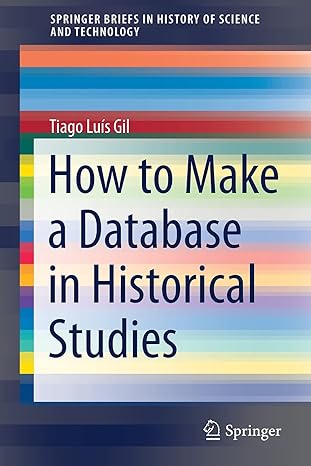Question
Question 1: Reachability You will be designing and describing three different algorithms below. These algorithms must run in linear time (i.e., O(E+V) on an adjacency
Question 1: Reachability
You will be designing and describing three different algorithms below. These algorithms must run in linear time (i.e., O(E+V) on an adjacency list and O(V2) on an adjacency matrix). Describe these algorithms either in terms of the algorithms for depth-first search, explore, topological sort, graph reversal, strongly connected components, and breadth-first search and/or in terms of algorithms that are the solutions to questions posed earlier in this quiz. (For example, you can assume a solution to #1 exists when designing an algorithm for #2.)
Do not design a brand new algorithm from scratch. You will receive no credit for this.
We want to see if you can assemble a new algorithm out of old ones. Don't disappoint us!
a) Describe (in two or three sentences) a linear-time algorithm that examines a directed acyclic graph and either
- returns a vertex from which there are paths to every other vertex in the graph (if such a vertex exists) or
- reports that there is no such vertex (otherwise).
Re-read the instructions at the beginning before starting.
b) Describe (in two or three sentences) a linear-time algorithm that examines a directed (but not necessarily acyclic) graph and either
- returns the set of all vertices from which there are paths to every other vertex in the graph (if such vertices exist) or
- reports that there are no such vertices (otherwise).
Re-read the instructions at the beginning before starting. You must use an algorithm for the previous problem as a major part of your solution.
c) Describe (in two or three sentences) a linear-time algorithm that examines a directed (but not necessarily acyclic) graph and either
- returns the set of all vertices to which there are paths from every other vertex in the graph (if such vertices exist) or
- reports that there are no such vertices (otherwise).
Re-read the instructions at the beginning before starting. You must use an algorithm for the previous problem as a major part of your solution.
Step by Step Solution
There are 3 Steps involved in it
Step: 1

Get Instant Access to Expert-Tailored Solutions
See step-by-step solutions with expert insights and AI powered tools for academic success
Step: 2

Step: 3

Ace Your Homework with AI
Get the answers you need in no time with our AI-driven, step-by-step assistance
Get Started


